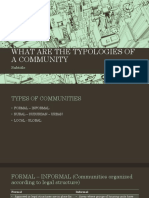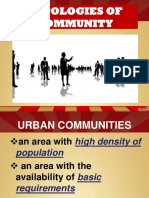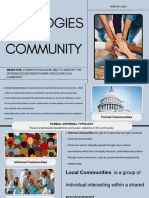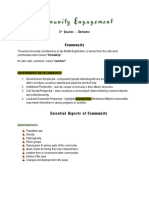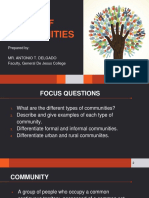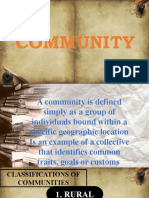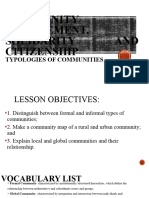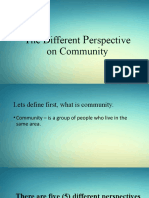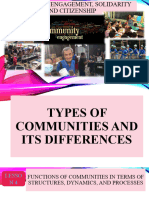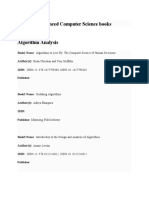0% found this document useful (0 votes)
59 views27 pagesCSC q1 m4 Typologies of Community Aserit
This document discusses different types of communities. It distinguishes between formal and informal communities, with formal communities having official structures and goals while informal communities form based on shared interests. Rural communities are described as having lower population densities and specializing in particular industries, while urban communities are more populated with diverse groups and industries. The document also discusses local communities as sharing environments and global communities as interacting over distances.
Uploaded by
zanjoeaquino1331Copyright
© © All Rights Reserved
We take content rights seriously. If you suspect this is your content, claim it here.
Available Formats
Download as PDF, TXT or read online on Scribd
0% found this document useful (0 votes)
59 views27 pagesCSC q1 m4 Typologies of Community Aserit
This document discusses different types of communities. It distinguishes between formal and informal communities, with formal communities having official structures and goals while informal communities form based on shared interests. Rural communities are described as having lower population densities and specializing in particular industries, while urban communities are more populated with diverse groups and industries. The document also discusses local communities as sharing environments and global communities as interacting over distances.
Uploaded by
zanjoeaquino1331Copyright
© © All Rights Reserved
We take content rights seriously. If you suspect this is your content, claim it here.
Available Formats
Download as PDF, TXT or read online on Scribd
/ 27




